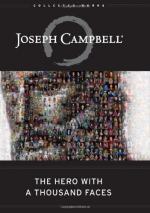|
This section contains 1,211 words (approx. 5 pages at 300 words per page) |

|
Gilgamesh in Relation to Campbell's Archetypal Model
Summary: In Joseph Campbell's The Hero With a Thousand Faces, Gilgamesh initially seeks immortality, but ultimately learns how to be a better king. The hero manifests Joseph Campbell's archetypal cycle of separation, initiation, and return.
According to Joseph Campbell's The Hero With a Thousand Faces, the "standard path of the mythological adventure of the hero is a magnification of the formula represented in the rites of passage: separation-initiation-return" (30). The heroic epic, Gilgamesh, clearly follows the overall structure of the archetypal cycle that Campbell defines. In the tale, Gilgamesh sets out at first to find immortality, but returns in the end to his kingdom of Uruk with the wisdom of how to be a better king.
Campbell defines the first phase of his model, separation, as a time when "a hero ventures forth from the world of common day into a region of supernatural wonder" (30). The subsections of separation, "The Call to Adventure" and "The Belly of the Whale", are clearly adhered to. In the beginning of the epic, Gilgamesh is an egoistic, selfish, and immoral king of the city of Uruk. He "sounds...
|
This section contains 1,211 words (approx. 5 pages at 300 words per page) |

|


